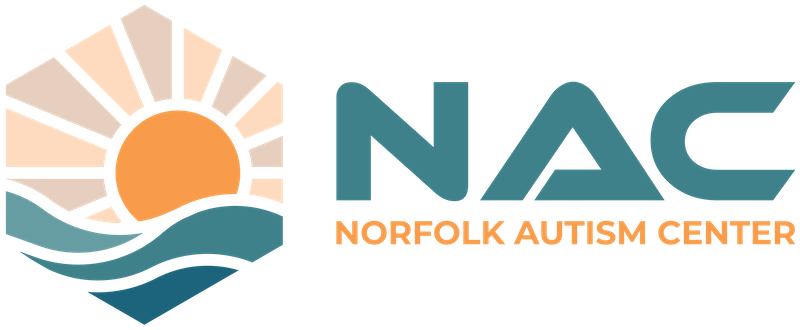Navigating the world of autism services often feels like assembling a puzzle without knowing what the final image should look like. Many families describe feeling overwhelmed by the fragmented nature of services—receiving speech therapy in one location, behavioral therapy in another, and educational support in yet another setting, with little coordination between them. Parents frequently wonder whether they’re missing important elements of care, struggle to coordinate between different providers, and question how various therapies and supports should work together to benefit their child.
These concerns are entirely reasonable given how complex autism support can be. The reality is that effective autism services involve multiple integrated components beyond just therapy sessions, and understanding these elements helps you advocate for complete care that addresses your child’s and family’s needs. When these components work together cohesively, they create a comprehensive support system greater than the sum of its parts.
This article outlines the essential components of truly comprehensive autism services and explains how they interconnect to support not just the child with autism, but the entire family unit. By understanding what complete care looks like, you gain the knowledge to evaluate your current services and identify any missing pieces that might benefit your child’s development and your family’s wellbeing.
Individualized Assessment and Planning
Comprehensive assessment forms the foundation of effective autism services, yet it’s often reduced to a single standardized test or brief observation. Truly meaningful assessment examines multiple aspects of a child’s development through various lenses and contexts.
Quality assessment should evaluate:
- Communication skills (both receptive and expressive language, alongside non-verbal communication)
- Social interaction patterns and relationship development
- Sensory processing across all sensory systems
- Cognitive abilities, learning style, and problem-solving approaches
- Adaptive skills for daily living and independence
- Motor abilities, both fine and gross motor
- Behavioral patterns, including the function or purpose of challenging behaviors
- Play skills and leisure interests
- Family priorities, resources, and concerns
This multifaceted assessment requires input from various professionals—speech therapists, occupational therapists, behavior analysts, educators, and often psychologists—along with detailed parent observations. Rather than occurring as a one-time event, comprehensive assessment should be an ongoing process that captures how a child functions in different environments and with different people.
Assessment findings should directly inform individualized treatment planning. Quality treatment plans set goals that are meaningful for daily life—not just easily measurable skills that may have little practical impact. Goals should be selected collaboratively with parents, based on what would most significantly improve quality of life for the child and family. The planning process should actively involve parents as experts on their child, not simply present them with professional recommendations for approval.
Comprehensive planning also includes regular reassessment and plan adjustments. Children with autism often show uneven development patterns, with rapid progress in some areas and challenges in others. Effective services include systematic review processes—typically quarterly or semi-annually—to evaluate progress, adjust strategies that aren’t working, and establish new goals as others are achieved. These reviews should examine not just whether the child is meeting specific benchmarks, but whether the skills being developed are actually improving real-life functioning and quality of life.
Evidence-Based Intervention Approaches
While Applied Behavior Analysis (ABA) forms the foundation of many autism intervention programs, truly comprehensive services integrate multiple evidence-based approaches tailored to each child’s specific needs. Different children respond differently to various intervention methods, and different skill areas often benefit from specialized approaches.
A comprehensive intervention program might include:
- Applied Behavior Analysis for systematic skill building and behavior management
- Speech therapy focused on communication development, including alternative communication systems when needed
- Occupational therapy addressing sensory processing, fine motor skills, and adaptive functioning
- Social skills training using structured teaching and naturalistic approaches
- Play-based developmental approaches that build relationships and emotional understanding
- Physical therapy for children with motor coordination challenges
- Cognitive behavioral strategies for older children with anxiety or emotional regulation difficulties
What distinguishes quality programming isn’t the inclusion of every possible therapy, but rather thoughtful integration of approaches selected specifically for the child’s profile. The intervention mix should evolve as the child develops, with different approaches becoming more or less prominent based on changing needs and responses.
Effective programs adapt intervention techniques based on the child’s learning style, interests, and developmental needs. Some children learn best through highly structured teaching, while others respond better to naturalistic approaches embedded in play and daily routines. Quality providers recognize these differences and adjust their methods accordingly, rather than applying a one-size-fits-all approach.
Intervention should occur in natural environments and everyday contexts whenever possible. While some skills may initially require focused teaching in controlled settings, the ultimate goal is for children to use these skills in real-world situations—at home, in school, and in community settings. Comprehensive services include deliberate planning for how skills will generalize beyond therapy sessions, with practice opportunities in various environments with different people.

Navigating the world of autism services often feels like assembling a puzzle without knowing what the final image should look like
Family Support and Training
The most sophisticated therapy program will have limited impact if it exists in isolation from a child’s daily life. Comprehensive autism services recognize parents as the constants in a child’s life and essential partners in the intervention process. Family support and training should be considered core components of services, not optional add-ons.
Effective family support includes:
- Structured parent training in specific intervention strategies that can be implemented at home
- Coaching during everyday routines to embed learning opportunities naturally
- Emotional support and connection with other families facing similar challenges
- Assistance navigating educational systems, insurance, and community resources
- Strategies for managing family life, including supporting siblings
- Crisis prevention and intervention planning for challenging situations
- Respite options to prevent caregiver burnout
Quality programs recognize that family support must be individualized based on each family’s specific needs, resources, and cultural context. Some families need intensive hands-on coaching, while others benefit more from periodic consultation. Some need significant emotional support, while others primarily seek practical strategies. The support provided should align with the family’s stated priorities rather than following a predetermined curriculum.
Sibling and extended family support also plays a crucial role in comprehensive services. Siblings of children with autism often have unique experiences and needs that benefit from direct attention. Quality programs may offer sibling support groups, education for extended family members, or guidance on fostering positive relationships throughout the family system. These supports recognize that autism affects the entire family unit, not just the child with the diagnosis.
Family training should focus on empowerment rather than dependency. While professional guidance remains valuable throughout a child’s development, the goal should be building family capacity to support their child independently over time. This includes helping families understand the principles behind intervention strategies, not just following prescribed techniques, so they can adapt approaches as new situations arise.
Coordination and Transition Planning
Even the most comprehensive service components will be less effective if they operate in isolation. Quality autism programs include deliberate coordination mechanisms that ensure consistency across different aspects of a child’s support system.
Effective coordination includes:
- Regular team meetings involving all providers working with the child
- Shared goals that different specialists support from their unique perspectives
- Consistent approaches to challenging behaviors across settings
- Systematic information sharing (with appropriate privacy protections)
- Collaborative problem-solving when challenges arise
- Joint planning for transitions and new skill development
- Clear communication protocols that keep all team members informed
Case coordination should reduce the burden on families rather than adding to it. Too often, parents become the sole communication link between different providers, responsible for transmitting information, explaining approaches, and reconciling contradictory recommendations. Quality programs designate case coordinators who facilitate information sharing and joint planning, allowing parents to focus on implementing strategies rather than managing communication.
Transition planning represents another critical element of comprehensive services. Children with autism often find transitions particularly challenging, whether these involve moving between daily activities or major life changes like starting school or entering adolescence. Effective services include proactive planning for transitions at various levels:
- Daily transitions between activities or environments
- Movement between different service providers or programs
- Developmental transitions (early intervention to preschool, elementary to middle school, etc.)
- Life stage transitions (childhood to adolescence, school to adult services)
Good transition planning begins well before changes occur and includes gradual preparation for both the child and family. This might involve visiting new settings, meeting new people, practicing skills needed in the next environment, and developing visual supports or other tools to make transitions more predictable. The goal is ensuring continuity of support even as specific services, settings, or providers change over time.
Bringing It All Together
While not every child needs every possible service, understanding these essential components helps families evaluate whether their current support system addresses all important areas. A truly comprehensive approach includes thorough assessment and planning, evidence-based interventions tailored to the child’s needs, meaningful family support and training, and coordinated care with thoughtful transition planning.
Assembling comprehensive services often requires persistence and advocacy, particularly in areas with limited resources or fragmented systems. However, knowing what components matter most helps families prioritize their efforts. You might focus initially on establishing core intervention services, then gradually address coordination needs and additional family supports as your capacity allows.
If you’d like to discuss how comprehensive autism services might look for your specific child and family, Norfolk Autism Center welcomes your call at (757) 777-3229. Our team at 152 Burnetts Way, Suffolk, VA 23434 is committed to providing integrated, family-centered autism support that addresses all the key components discussed in this article. We understand that quality care requires looking beyond isolated therapy sessions to build a cohesive support system that enhances quality of life for both children with autism and their families.




